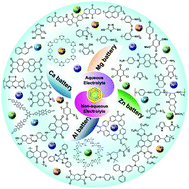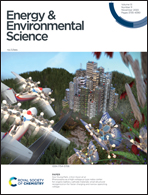Recent advances in developing organic electrode materials for multivalent rechargeable batteries
Abstract
Due to the low cost and abundance of multivalent metallic resources (Mg/Al/Zn/Ca), multivalent rechargeable batteries (MRBs) are promising alternatives to Li-ion and Pb-acid batteries for grid-scale stationary energy storage applications. However, the high performance of inorganic electrode materials in Li-ion batteries does not extend to MRBs, because the high charge density of multivalent cations dramatically reduces their diffusivity in the crystal lattice of inorganic materials. To achieve high-performance MRBs, organic electrode materials (OEMs) with abundant structural diversity and high structural tunability offer opportunities. This review presents an overview of the state-of-the-art OEMs in MRBs, including non-aqueous rechargeable Mg/Al/Zn and aqueous rechargeable Mg/Al/Zn/Ca batteries. The advantages, challenges, development, mechanism, structure, and performance of OEMs in MRBs are discussed in detail. To provide a comprehensive and thorough understanding of OEMs in MRBs, the correlation between molecular structure and electrochemical behavior is also summarized and discussed. This review offers insights for the rational structure design and performance optimization of advanced OEMs in MRBs.



 Please wait while we load your content...
Please wait while we load your content...